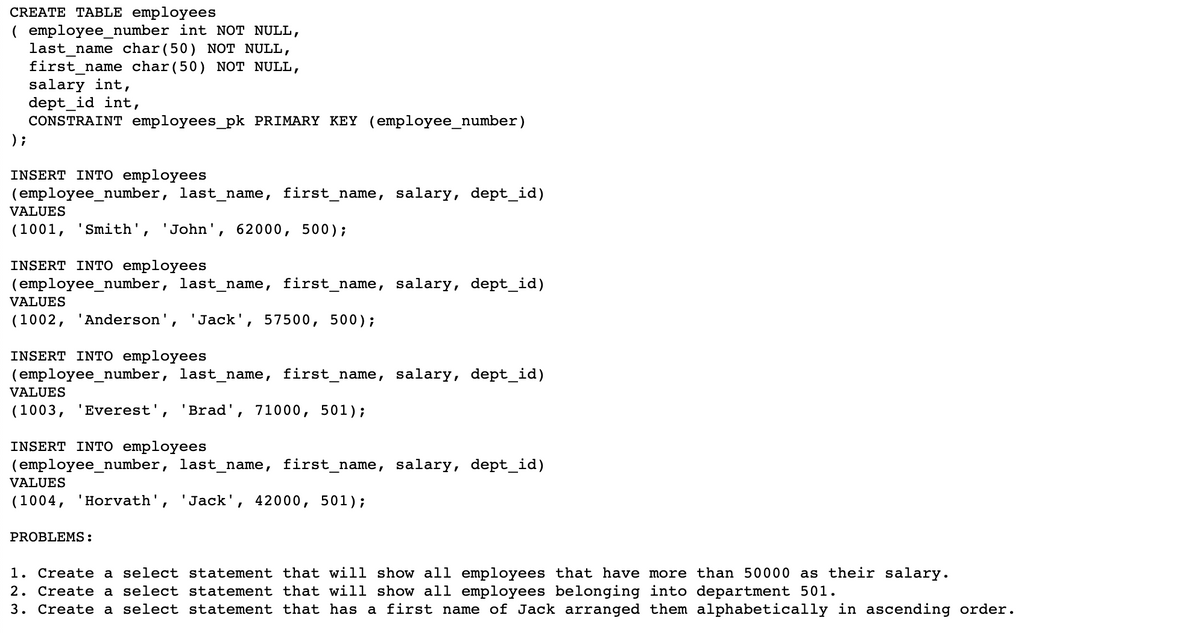CREATE TABLE employees ( employee_number int NOT NULL, last_name char(50) NOT NULL, first_name char(50) NOT NULL, salary int, dept_id int, CONSTRAINT employees_pk PRIMARY KEY (employee_number) ); INSERT INTOo employees (employee_number, last_name, first_name, salary, dept_id) VALUES (1001, 'Smith', 'John', 62000, 500); INSERT INTO employees (employee_number, last_name, first_name, salary, dept_id) VALUES (1002, 'Anderson', 'Jack', 57500, 500); INSERT INTO employees (employee_number, last_name, first_name, salary, dept_id) VALUES (1003, 'Everest', 'Brad', 71000, 501); INSERT INTO employees (employee_number, last_name, first_name, salary, dept_id) VALUES (1004, 'Horvath', 'Jack', 42000, 501); PROBLEMS: 1. Create a select statement that will show all employees that have more than 50000 as their salary. 2. Create a select statement that will show all employees belonging into department 501. 3. Create a select statement that has a first name of Jack arranged them alphabetically in ascending order.
SQL
SQL stands for Structured Query Language, is a form of communication that uses queries structured in a specific format to store, manage & retrieve data from a relational database.
Queries
A query is a type of computer programming language that is used to retrieve data from a database. Databases are useful in a variety of ways. They enable the retrieval of records or parts of records, as well as the performance of various calculations prior to displaying the results. A search query is one type of query that many people perform several times per day. A search query is executed every time you use a search engine to find something. When you press the Enter key, the keywords are sent to the search engine, where they are processed by an algorithm that retrieves related results from the search index. Your query's results are displayed on a search engine results page, or SER.

Trending now
This is a popular solution!
Step by step
Solved in 2 steps






